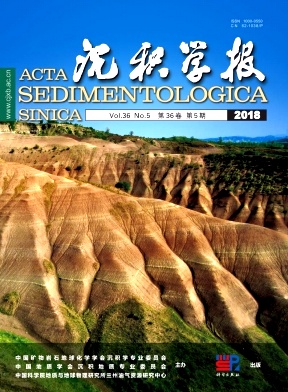Geochemical Characteristics of n-alkane and n-alkan-2-one in Mildred Peat Bog from the Athabasca Region, Canada
doi: 10.14027/j.issn.1000-0550.2018.073
- Received Date: 2017-04-21
- Rev Recd Date: 2017-11-08
- Publish Date: 2018-10-10
-
Key words:
- peat /
- n-alkane /
- n-alkan-2-one /
- source input /
- geochemistry
Abstract: The geochemistry of n-alkane and n-alkan-2-one in the Mildred peat bog of the Athabasca region is systematically analyzed in order to determine the source material of organic matters in peat, and explore the genetic correlation between n-alkane and n-alkan-2-one, which reveals some biological information and vegetation evolution characteristics in the study peat bog. The distributions of n-alkane and n-alkan-2-one are characterized by high molecular weight and post peak pattern, with strong odd over even predominances, which indicates that the peat organic materials are primarily derived from in situ terrigenous higher plants, whereas the contribution from sphagnum and aquatic plants seems to be small. In accordance with principal component analysis (PCA) and n-alkane proxies distributions, the Mildred peat profile is divided into three intervals, the peat-forming plant in the upper interval (living layer to -17 cm) containing mainly Sphagnum fuscum; the middle interval (-17 cm to -41 cm) with woody plants, Ericaceae, piece needles and minor Cyperaceous as the in situ accumulated plants; and the deeper interval (-41 cm to the bottom) containing a number of Cyperaceous plants increased with some woody debris and Ericaceae grow. The similar distribution between n-alkane and n-alkan-2-one suggests microbial oxidation of related n-alkanes as the primary source of n-alkan-2-one in the Mildred peat bog. A direct input from peat-forming plants also contributes to n-alkan-2-one formation, particularly in the top profile. Microbial β-oxidation and decarboxylation of n-fatty acids can be also considered as an alternative origin of n-alkan-2-ones but its contribution is not significant.
| Citation: | HE DaShuang, HOU DuJie, HUANG HaiPing. Geochemical Characteristics of n-alkane and n-alkan-2-one in Mildred Peat Bog from the Athabasca Region, Canada[J]. Acta Sedimentologica Sinica, 2018, 36(5): 1049-1058. doi: 10.14027/j.issn.1000-0550.2018.073 |






 DownLoad:
DownLoad: